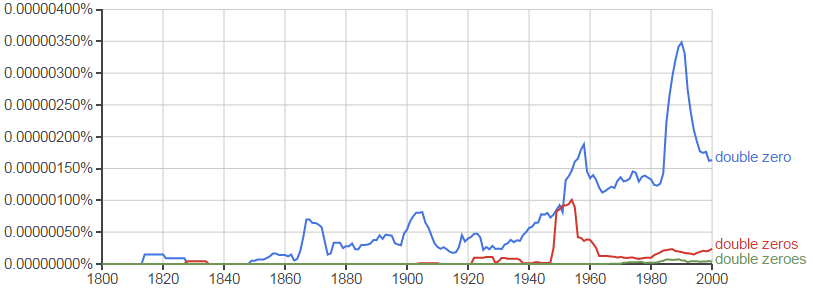What's the correct way to refer to two consecutive digits 0?
- double zero?
- double zeros?
- double zeroes?
Here's an example phrase:
The number ends with double zero[es].
In this case, "double zero" is a singular noun referring to two zeros. So you'd say:
There's a double zero.
If you're referring to multiple zeros in plural, you'd use "zeros":
There are two zeros.
Zeroes is a verb meaning to adjust to zero. For example, taring a scale:
I zeroed the scale.
He zeroes the scale.
The others nailed the reasoning, but just for extra evidence, Google Ngrams confirms that "double zero" is the most commonly-used option:

Interestingly "double zeros" seems to had a brief popularity spike around the 1950s where it tied with "double zero".